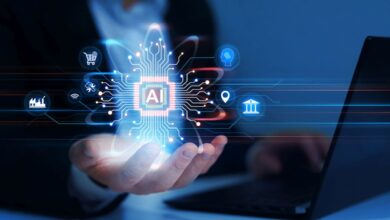Enhancing DevSecOps Workflows with Generative AI

The advent of generative AI is set to revolutionize traditional DevSecOps practices by addressing the manual and labor-intensive aspects of the development lifecycle. This innovation aims to not only streamline workflows but also enhance software quality and security, leading to faster delivery times. The key, however, lies in integrating AI capabilities across the entire development process, not just during code creation.
The “2023 State of AI in Software Development” report reveals a surprising statistic: only a quarter of a developer’s time is dedicated to actual code writing. The remainder is spent navigating through a series of essential but time-consuming tasks, from initial commits to final production stages. This area of software development presents a ripe opportunity for AI to make a significant impact, as discussed by Taylor McCaslin, GitLab Field CTO, along with organization leaders Lee Faus and Brian Wald, in the insightful webinar “Explore the Power of AI and GitLab Duo” (available on-demand).
The discussion highlighted the multifaceted benefits of AI in speeding up the DevSecOps pipeline, from automating test builds to diagnosing and fixing failed builds. Deploying AI effectively requires a strategic approach, however, beginning with a thorough assessment of existing workflows and establishing strong guardrails to mitigate any introduced risks.
This is a sponsored article by Gitlab. GitLab is a complete DevOps platform, delivered as a single application, fundamentally changing the way Development, Security, and Ops teams collaborate and build software. From idea to production, GitLab helps teams improve cycle time from weeks to minutes, reduce development costs and time to market while increasing developer productivity. Learn more about GitLab.
Initiating AI Integration: Workflow Assessment
Understanding and mapping out your current workflows is the first step towards AI integration. This process involves identifying the most beneficial areas for AI application and setting up a consistent approach that incorporates necessary safeguards against potential risks. For example, addressing the challenge of automatically generated code potentially including security vulnerabilities requires a proactive workflow designed to detect and rectify such issues early in the development process.
Key Strategies for Successful AI Deployment
Focus on Major Development Challenges: Prioritize revamping workflows that directly address your most significant software development hurdles, whether they involve modernizing legacy systems, enhancing security protocols, or optimizing resources.
Establish AI Guardrails: It’s crucial to understand the risks associated with AI, especially in terms of data interaction and compliance requirements. Collaborate with your legal, compliance, and DevSecOps teams to scrutinize the AI models and methodologies being employed. Resources from the GitLab AI Transparency Center, along with specific blog posts on building a transparency-first AI strategy, offer valuable guidance in this regard.
Streamline AI Tool Usage: Simplify your AI toolset across the development lifecycle to minimize complexity and reduce potential security risks. An overcrowded tool landscape can lead to operational inefficiencies and increased overhead costs.
Measuring AI’s Impact on Productivity
Quantifying AI’s contribution to your organization is essential for understanding its true value. This involves going beyond traditional metrics like code deployment frequency or bug remediation times to develop a comprehensive view of AI’s influence on productivity and development velocity.
At GitLab, the impact of AI is measured by standardizing workflows within the organizational structure, allowing for the aggregation and analysis of metrics from various teams directly within the user interface. This structure facilitates a clear visualization of AI’s role in enhancing the speed and efficiency of the development process, from vulnerability resolution to merge request validation.
GitLab Duo: A Unified AI-powered DevSecOps Solution
GitLab is at the forefront of integrating generative AI into DevSecOps with the development of GitLab Duo, a toolkit that incorporates powerful AI models and advanced technologies from leading cloud vendors. Ranging from code assistants to conversational chatbots and vulnerability explainers, GitLab Duo is designed to significantly reduce cycle times and improve operational efficiency.
The “Omdia Market Radar: AI-Assisted Software Development, 2023–24” report recognizes GitLab Duo as a standout solution for enterprise-grade application development, highlighting its seamless integration across the SDLC pipeline.
Practical Applications of GitLab Duo:
- Merge Request Descriptions: Automatically generates detailed descriptions for merge requests, identifying and addressing missing tasks.
- Code Explanation in Natural Language: Enables QA testers to gain a deeper understanding of complex code, facilitating the creation of comprehensive test cases.
- Pipeline Error Analysis: Offers insights into potential root causes of pipeline failures, providing actionable solutions for swift resolution.
- Vulnerability Resolution: Empowers engineering teams with the knowledge to identify, locate, and fix vulnerabilities efficiently, streamlining the security aspect of software development.
By strategically incorporating generative AI into your DevSecOps environment, you can unlock new levels of productivity and innovation, ensuring your development processes are not only faster but also more secure and reliable.


